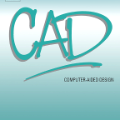Automatic evaluation of the retinal fundus image is emerging as one of the most important tools for early detection and treatment of progressive eye diseases like Glaucoma. Glaucoma results to a progressive degeneration of vision and is characterized by the deformation of the shape of optic cup and the degeneration of the blood vessels resulting in the formation of a notch along the neuroretinal rim. In this paper, we propose a deep learning-based pipeline for automatic segmentation of optic disc (OD) and optic cup (OC) regions from Digital Fundus Images (DFIs), thereby extracting distinct features necessary for prediction of Glaucoma. This methodology has utilized focal notch analysis of neuroretinal rim along with cup-to-disc ratio values as classifying parameters to enhance the accuracy of Computer-aided design (CAD) systems in analyzing glaucoma. Support Vector-based Machine Learning algorithm is used for classification, which classifies DFIs as Glaucomatous or Normal based on the extracted features. The proposed pipeline was evaluated on the freely available DRISHTI-GS dataset with a resultant accuracy of 93.33% for detecting Glaucoma from DFIs.
翻译:Glaucoma结果导致视力逐渐退化,其特点是光杯形状变形和血管机体变形,导致神经肾上腺边缘形成一个结点。在本文中,我们提议从数字基金图象(DFIs)和光杯(OC)区域自动分解光碟(OD)和光杯(OC)自动分解的深入学习管道,从数字基金图象(DFIs)中提取预测Glauscoma所需的不同特征。这一方法利用对神经神经神经结膜的焦点分析以及杯对分辨率值,将参数分类,以提高计算机辅助设计(CAD)系统在分析格劳科马的准确性。支持基于病媒的机器学习算法用于分类,根据提取的特征,将DFIs分类为Glaucomatous或普通。拟议编审结利用DISHTI-GS可自由获得的分辨分析器分析神经边缘数据,并得出GSAFI93的精确度。





